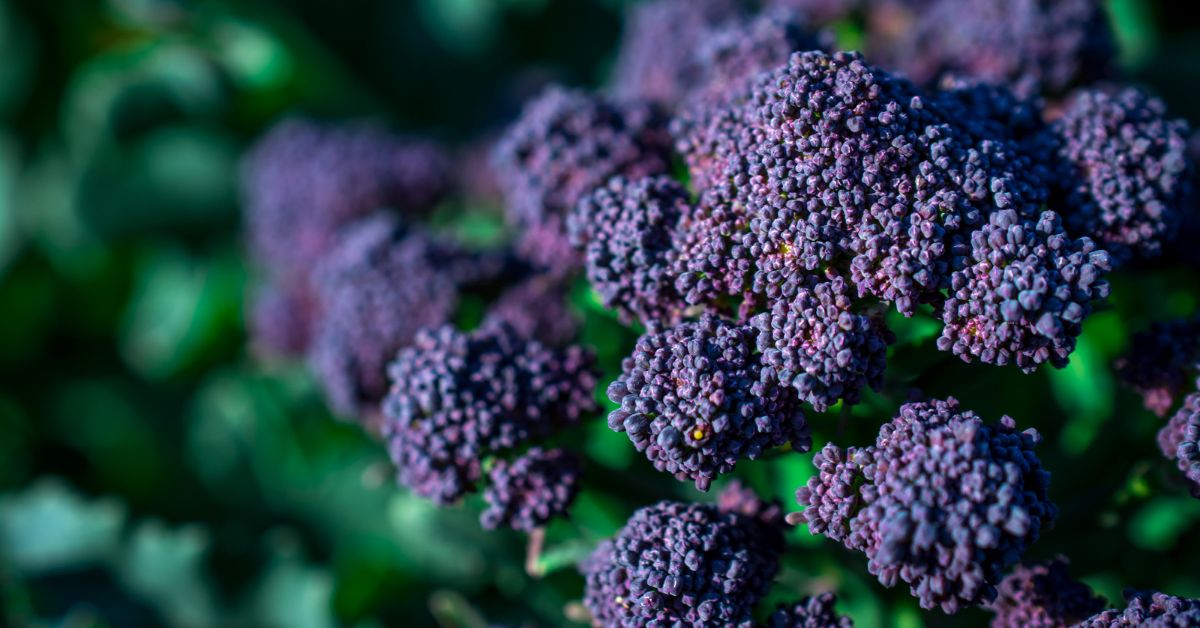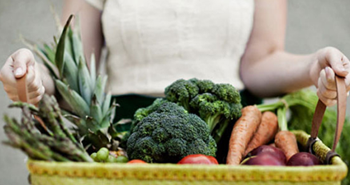Broccoli is a wonderful vegetable to grow in your garden. It’s hard to beat the tender sweetness of a head of broccoli cooked just minutes after being harvested.
It’s one of the easiest plants to put in for an early spring garden, and does well as a late season crop. It grows quickly, doesn’t require much tending, and is nutritious and delicious!
The good news is that growing broccoli is quite easy. We’ve got some smart tips on getting started and how to care for and protect your plants to ensure a hearty harvest of broccoli all summer long.
Selecting Which Varieties to Grow
There are four types of broccoli you can grow, each with their own characteristics that make them appealing to different gardeners and home cooks: Calabrese, Purple Broccoli, Broccoli Raab, and Romanesco.
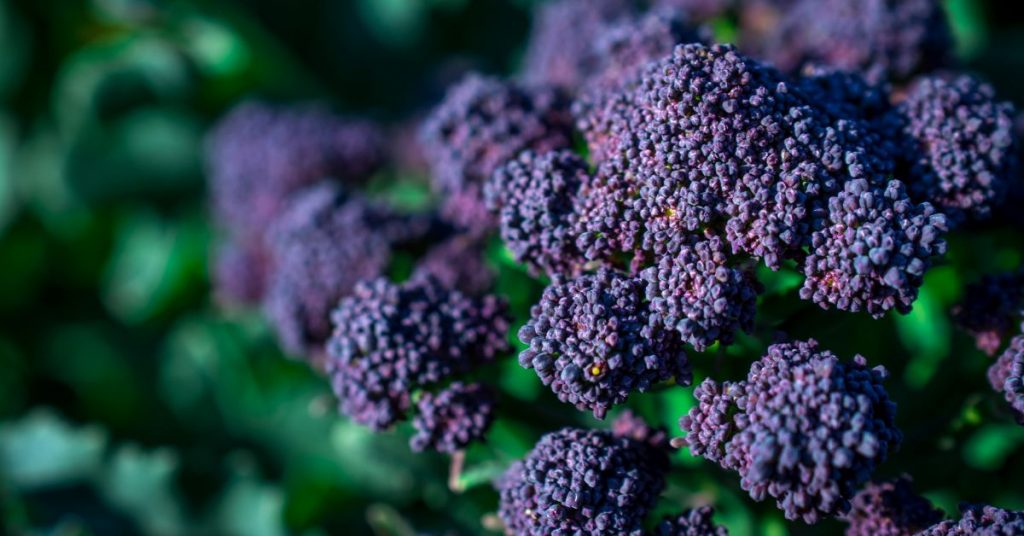
Calabrese
Calabrese Broccoli is known for its large-headed edible flower stalk, which consists of clusters of small green flower buds. This is not only tasty but also highly nutritious. De Cicco, Calabrese, and Waltham 29 are several of our favorites for the best tasting compact heads.
Purple
Purple Cauliflower is a type of broccoli sold in southern Italy, Spain, and the United Kingdom. It has a head shaped like cauliflower, but consists of tiny flower buds. It sometimes has a purple cast to the tips of the flower buds. Early Purple Sprouting is one of our faves for an overwintering variety that gives lots of little purple sprouts in the spring.
Raab
Although it looks looks like a broccoli, this plant is actually a turnip! Broccoli Raab is grown for its leaves and stems, unlike heading broccoli. It’s tasty and also highly nutritious. Cima di Rapa or Sorrento are two great options for these quick-growing Italian heirloom greens.
Romanesco
Romanesco Cauliflower (also known as Romanesco Broccoli or Roman Cauliflower) has a distinctive fractal appearance of its heads, and is yellow-green in color. Not only are they easy to grow and very delicious, they’re a stunning plant to grow and harvest! Romanesco Italia is the most common variety.
Tips for Growing Delicious and Hearty Broccoli
Broccoli likes full sun, especially when growing in cool weather. It will tolerate some shade, but this slows maturation. In warm weather it will grow in light shade.
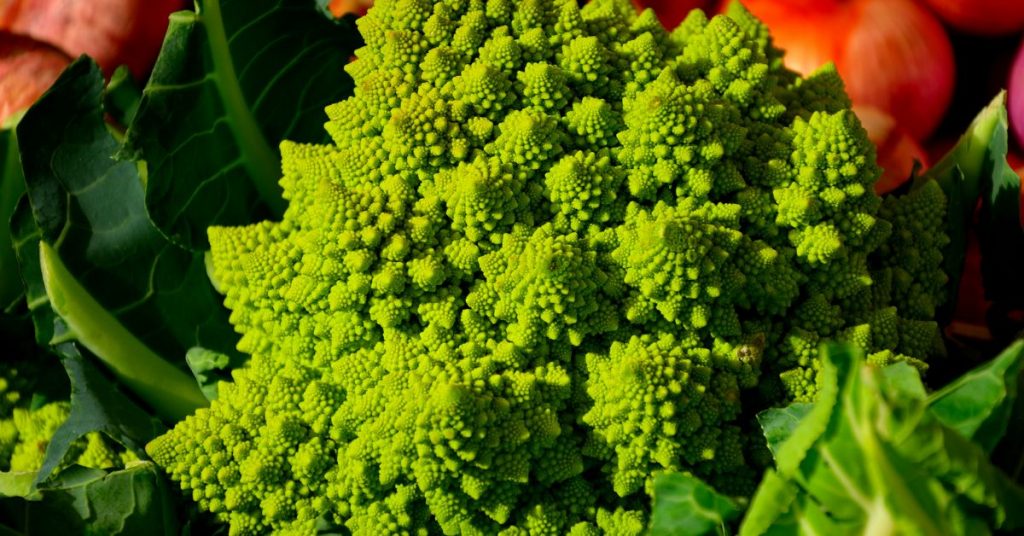
You generally don’t want a large amount of broccoli to mature at one time (unless you are going to freeze it). For this reason it is usually sown in small quantities in succession every 3 to 4 weeks.
Soil Preparation
Broccoli needs to grow fast for best quality. To do this it needs a rich, moist, well-drained soil, with lots of available nutrients and organic matter. Like most Brassicas it doesn’t like acid soil, so add lime if necessary. The quantity will depend upon your soil, but 5 pounds of dolomitic limestone per 100 square foot would be a good start.
Also like most members of the cabbage family, broccoli is a hungry plant and needs plenty of nutrients for good growth. Prepare the soil by incorporating 2 to 3″ of aged manure, fertilizer, or compost, into the top 6 to 8″ of soil (which is where most of the plants feeder roots are found).
If your ground is still cold in the early spring, you can lay down a layer of plastic to warm the soil before planting to speed up seed germination.
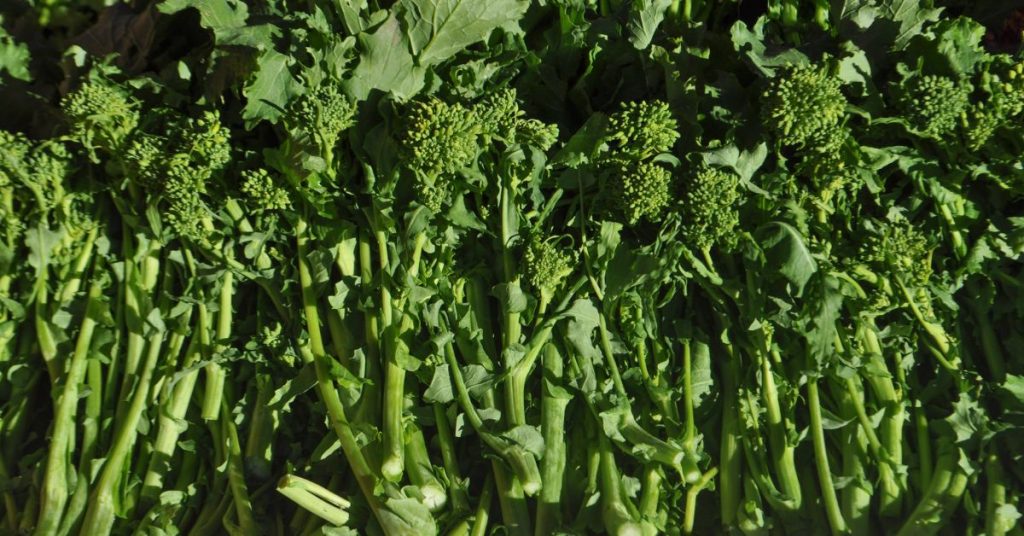
Plant Care
Broccoli germinates readily, but you should still plant twice as many seeds as the number of plants you want, at a depth of 1/2″. Once the seedlings have their first set of true leaves, thin them to the proper spacing.
The large plants take up quite a bit of space, but this usually isn’t an issue in cooler weather, as the garden is often half empty anyway. The spacing you use depends on the fertility of the soil and how large you want the heads to grow. The wider the spacing, the larger the individual plants, (and their heads) can get. At 18″ spacing, the heads may grow to be 6″ in diameter. Closely spaced plants do not produce as many side shoots either.
- 12-18″: Excellent soil or for small heads.
- 18″: Good soil or for medium heads.
- 18-24″: Poor soil or for large heads.
By the time it goes outside, the plant should be 3″ to 4″ high, with 3 to 5 leaves and a stem diameter of about 1/8″. Plant hem out slightly deeper than they grew in the flats, to the depth of their first true leaves.
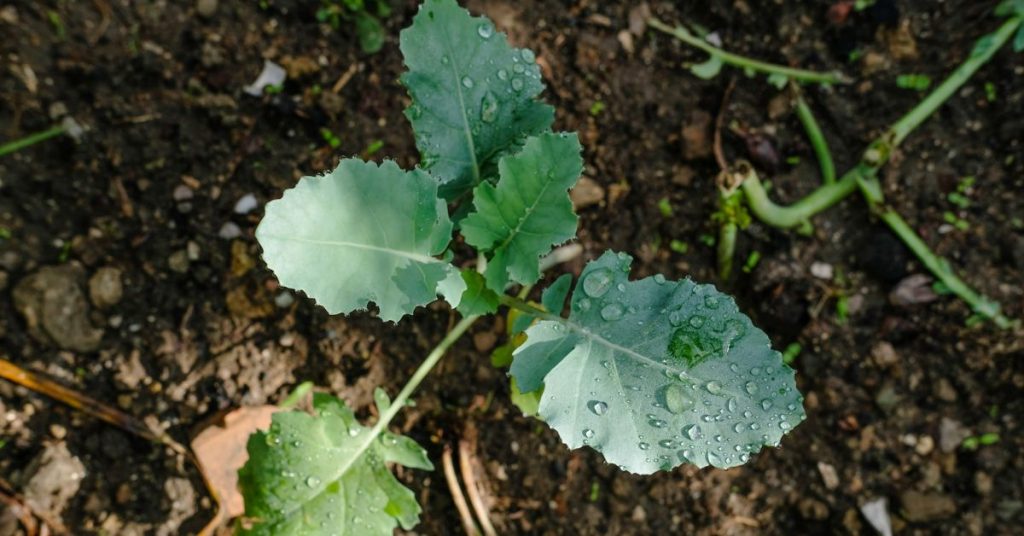
The plants need looking after carefully. If there is a slow down or interruption in growth they may bolt prematurely.
Broccoli transpires quite a lot of water and for optimal growth the soil should be moist at all times. In dry conditions or hot weather it is critical that the plants receive sufficient moisture. A lack of water may cause the plants to bolt. The best way to know how much moisture is in your soil is to feel 2″ below the soil line. If it’s dry, water.
All plants of the cabbage family are susceptible to boron deficiency, which manifests itself as hollow stems. Adding matured compost to the soil should supply the plants with all the boron they need.
Plant Protection
You can avoid the most serious broccoli pests by covering the young plants with row cover. This is a lot of work though, so don’t do it unless they become a problem.
Broccoli is edible after the florets have separated and even when some of the flowers have opened, but it’s not as good. Use shade fabric to extend summer harvests. Broccoli’s flavor improves with cooler temperatures.
Harvest
The perfect time to harvest broccoli is when the individual flower buds are visible and somewhat swollen. If you harvest earlier than this it will still taste good, but you won’t get as big a harvest. As the head gets over-mature, the individual florets start to separate and the yellow petals become visible. Broccoli is edible after the florets have separated and even when some of the flowers have opened, but it’s not as good.

If you miss the optimal harvest time you should still cut off the heads, as this will stimulate the plants to produce new side shoots. Once the main head has been removed, smaller broccoli heads will grow to the sides. On large healthy plants these can be 5″ in diameter.
In warm weather the plants may produce side shoots every few days, so keep on top of harvesting. These side shoots greatly increase the size and duration of the harvest. After the side shoots are finished, you might try cutting the plant right back, almost to the ground. This sometimes stimulates it to send up a new stem.
Seed Saving
Saving your own broccoli seeds is easy to do, but takes some preparation. Broccoli usually self-incompatible and must be cross-pollinated by insects. This means there must be a number of plants flowering at the same time. All of the Brassica oleracea crops are the same species and will cross with each other. To maintain purity you have to ensure that only one type flowers at once. The alternative is to isolate them, either by distance (1000 yards for different varieties, 1500 yards for different crops), or by caging them (don’t forget they need insects for pollination). Save the seed from at least 5 plants to maintain some genetic diversity.
Seed is produced in long pods and should be gathered when the older bottom pods first start to split open. Watch them carefully as they shatter easily when they are fully ripe. Cut the seedpod bearing stems and dry them in a warm place. You can place them in a paper bag to ensure you don’t lose any. The large seeds are easily handled and cleaned. Of course it is essential that they are thoroughly dry before storage.
Broccoli Raab will cross with Chinese cabbage, turnips, some rapeseed (canola) and other plants in the same species. Be sure to isolate by at least 1/8 mile for home use. For pure seed of small plantings isolate by 1/4 to 1/2 mile.
Alternative Options for Growing Broccoli
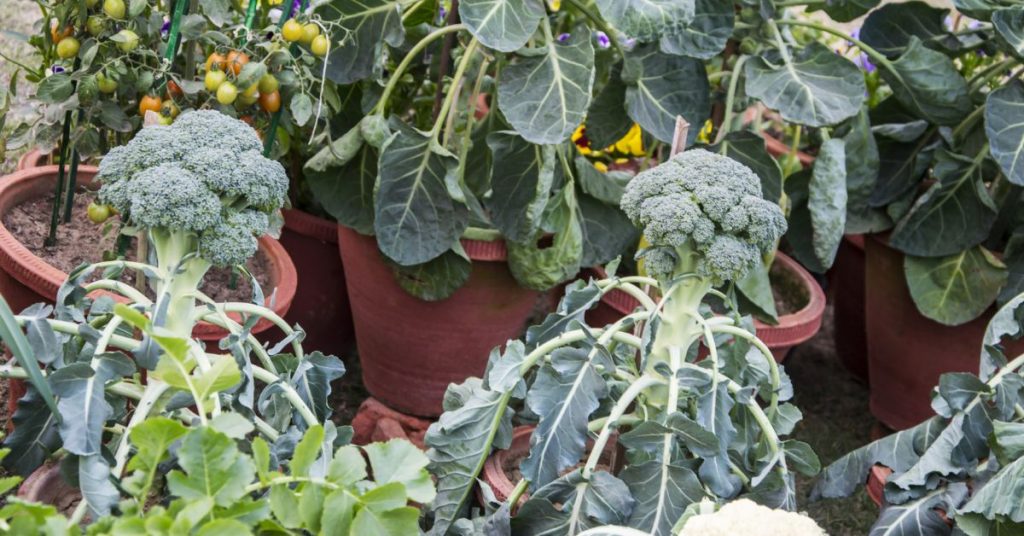
Container Gardens
For one broccoli plant, you’ll need a pot that is at least 10″ deep and 12″ wide, but the deeper the better. Fill with a mixture of potting soil and compost and keep the soil moist but not overly wet. If you are using a larger container, be sure to space your broccoli plants at least 18 to 24″ apart. Although broccoli is a cool weather plant, it loves sunshine so be sure to place the container in an area with access to at least 3 hours of full sun a day.
Fall Garden
Broccoli prefers cooler temperatures and does well as a fall crop, growing and heading up best at about 65˚ F. It is also less bothered by pests in cool weather and the heads stay in peak condition for longer. Mature plants can sit in the garden, ready to harvest, for weeks. They are fairly hardy and can survive frost as low as 20˚ F. And with proper protection, they can withstand even lower temperatures.
Autumn broccoli should be transplanted 9 weeks before the first fall frost date, so it is close to maturity by the time cold weather hits. If you are growing a lot of broccoli for freezing, you should plant it all at once at the optimal time, which is late summer. This also means you won’t have to keep it frozen all summer.
If a severe frost threatens, you should harvest any remaining heads and eat or freeze them. If you need to, you can protect them from extreme cold to extend your harvest.
Smart Gardener Can Help
Smart Gardener makes it easy to start a garden. We can help you decide which varieties of broccoli will work best in your garden and give you the advice you need to get started, and then send you weekly to-dos to keep you on track all season long!

